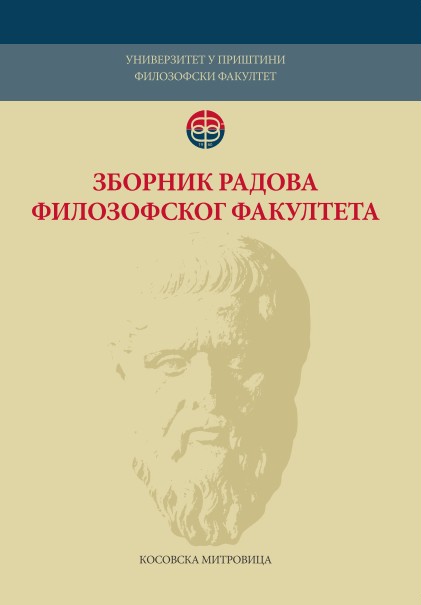Породични односи и склоност ка агресивним облицима понашања адолесцената
Family relationships and tendency towards aggressive behaviour in adolescents
Author(s): Miroslav Krstić, Ivana ĐorđevićSubject(s): Social Sciences, Psychology
Published by: Филозофски факултет, Универзитет у Приштини
Keywords: family relationships; aggression; hostility; adolescents
Summary/Abstract: It is a well-known fact that practice in clinical, mental health, or forensic psychology, as well as in other applied psychological disciplines, is always a few steps ahead of the theoretical framework. It is the practical work, experience, and research that lead to acquiring new knowledge and contribute to the theoretical base. The modern world has been flooded by a wave of aggression and destruction in the recent decades, most prominently by younger population. Having this in mind, we have focused not only on studying a sample of children and adolescents who exhibit delinquent and asocial behaviour-who may or may not be characterized as delinquents and criminal offenders-but also on the underlying causes of such behaviour. Due to the volume restrictions, this paper will hone in on the correlation of family relationships, character traits, and tendency towards aggressive behaviour in adolescents with a view of generating guidelines for the practical work in clinical psychology, where special emphasis is placed on the correlation-as well as the predictive potential-of the family relationships to the models of aggressive hostility. The study aims at determining whether family relationships are statistical predictors of the degree of manifestation of aggression and hostility. The results indicate that the dimensions of family relationships present good predictors of different categories of aggressive and hostile behaviour in adolescents. The research sample consists of 212 high school students in the Kosovska Mitrovica school district. The main research instruments are: FACES IV, Big-Five inventory (BFI), and BDHI scale. In conclusion, the practical and theoretical contribution of this study, as a part of the ongoing series, is summarized as follows: 1) the study expands on the range of the instruments used in psychodiagnostics of children and adolescents owing to the methodological principles of the clinical approach such as group framework, openness of the batteries of psychodiagnostic tests, multidimensionality, favouring the wide-range techniques, and explorativity; 2) in terms of forensic psychology-which is linked to clinical psychology as an applied discipline, especially with psychodiagnostic and specifically with psychodiagnostic of children and adolescents-the research results indicate a more successful evaluation of the most probable truth for an individual in the given circumstances by introducing new psychodiagnostic instruments in the legal process; 3) the study highlighted several predictors of family relationship dimensions and the manifestation of aggressive and hostile behaviour in adolescents, which promotes preventive measures in ensuring and nourishing mental health of children and adolescents and their families in a wider social community; and 4) hopefully, the study contributed to the overall evaluation and prediction of the behavioural patterns of children and adolescents and the correlation of their family relationships and the tendency towards aggression.
Journal: Зборник радова Филозофског факултета у Приштини
- Issue Year: 50/2020
- Issue No: 2
- Page Range: 297-313
- Page Count: 17
- Language: Serbian

